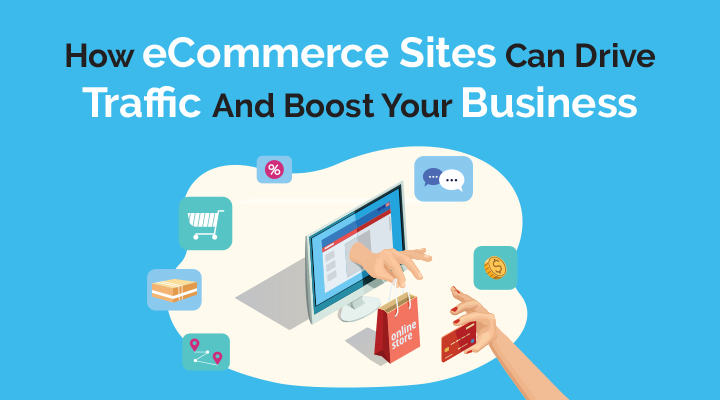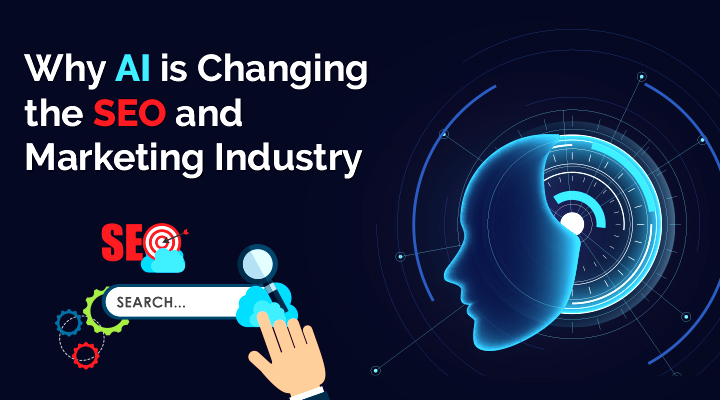ECommerce is the online sale of goods and services through websites. eCommerce sites are often used to sell physical products, but they can also be used to sell digital products, such as e-books or software. eCommerce sites can drive traffic to your business by helping you to increase sales and market your business more effectively. This blog will overview the benefits of eCommerce sites for businesses and explain how eCommerce sites can drive traffic and boost your business.
Benefits of eCommerce sites for businesses
Ecommerce sites are a great way to boost your business. They provide businesses with a number of benefits, including traffic and conversions. By working with an eCommerce site provider, your business can take advantage of all the features available. These include marketing tools, shipping capabilities, payment gateways, and more. They can help you reach new customers, boost sales, and increase your brand awareness. However, building an online presence is essential for any business. eCommerce sites are a great way to do this!
Increases brand awareness
Brand awareness is one of the most important marketing tools an online business can have. It can be used to sell physical or digital products, and through other forms of advertising (such as affiliate marketing). Furthermore, increased brand awareness leads to higher traffic levels to your website and increased conversion rates – making it a powerful tool for increasing profitability.
Reduces costs associated with marketing efforts
Marketing costs can be expensive and often consume a lot of time and resources. By using email marketing, businesses can reduce the costs associated with marketing efforts by increasing business revenue from existing customers, providing convenience and choice to their customers, and helping them grow organically without any need for expensive advertising. In other words, email marketing is the perfect tool for small businesses that want to reach a wider audience at lower costs
Generates leads and customers
Website traffic is one of the key factors that can help you boost your business. By using eCommerce sites to generate more website visitors, you will be able to sell more products and generate leads and customers for your business in the process. Furthermore, email marketing can also prove effective in grabbing leads from interested shoppers. Once you have these valuable assets, it’s time to nurture them with nurturing campaigns that lead to conversions (sales). Making use of lead capture forms or other marketing tools helps you keep track of who has visited your store online and why they came there – this way, you can better target future promotions or sales- even prospects who didn’t buy anything right away!
Converts more visitors into paying customers
There’s no denying that eCommerce is one of the most critical marketing strategies for businesses today. It allows you to connect with a wider audience and convert more visitors into paying customers. However, it isn’t easy getting started – especially if you’re not familiar with eCommerce platforms. That’s where eCommerce consultants come in handy! They can help you choose the right platform for your business, set up an effective marketing strategy, and generate traffic that converts into sales.
How can eCommerce sites drive traffic and boost business?
ECommerce sites are a great way to boost business. One way to do that is by driving traffic to the site. There are many ways eCommerce sites can do this, but the most important thing is to find the best method for your business. One way is through search engine optimization (SEO). This ensures your site appears first in relevant searches, which can increase website traffic and boost your business. Additionally, eCommerce sites can include affiliate programs, which allow you to share a portion of the sales generated from customers who click on links in your content. Additionally, effective marketing campaigns can target specific demographics and help you reach a wider audience.
Optimize your e commerce website for search engine visibility
Website optimization is essential for any business looking to achieve high search engine visibility. By monitoring your website’s analytics, you can determine where changes need to be made in order to improve performance and drive more traffic. Adding rich media (images, videos) will help boost click-through rates and conversion rates while using keywords in your title, meta descriptions and content will get your site listed on the first page of search engine results pages (SERPs). It’s also necessary to make sure that your website is optimized specifically for Google, Bing, and Yahoo! – otherwise it won’t rank as well as sites that are tailored specifically for those engines.
Use keyword research to target your audience
To get the most out of your online marketing campaigns, you need to target your audience accurately. One way to do this is by using keyword research tools like Google Adwords or Bing Ads. You can use these platforms to bid on specific keywords and reach potential customers with relevant ads. You also have the option of running paid search ads or display ads; both are effective ways of reaching a wider audience and generating leads for further marketing efforts down the line. Make sure that you keep track of website analytics so that you can measure results and fine-tune your strategy accordingly. Identify the right keywords that resonate with your target market, as doing so will make targeting much easier.
Create compelling content
Creating content that is relevant, engaging, and of high quality is one of the most important steps in building a successful online marketing campaign. Content should be updated regularly and focused on specific topics that are relevant to your target audience. Using images, videos and interactive elements can make it even more interesting for visitors. Make sure all your website’s contents are optimized for search engine optimization so you can reach a wider audience. Quality content will help convert potential customers into real ones – making online marketing an incredibly powerful tool in gaining a competitive edge in today’s market landscape.
What is Required to Build a Beautiful (and High Performing) Ecommerce Website
Building an eCommerce website is a great way to boost your business. Not only is it a great way to sell products online, but it’s also a great way to generate more traffic and drive more sales. Here are a few essential things that you need to take into account when designing your website: – Make sure the design of your site matches the unique selling proposition (USP) of your product or service. – Use effective marketing strategies to drive traffic to your site and generate sales! – Creating an eCommerce website is a great way to generate more traffic and boost your business. So go ahead, take the plunge and give it a try!
1. Mobile responsive.
When it comes to website design, one of the most important factors is responsive design. This means that your website should be designed so that it looks good on all devices – smartphones and tablets included. Not only will this make navigation easier for visitors, but it will also boost web traffic as people are more likely to browse online from their handheld devices. In addition, images and videos must be optimized for web browsing instead of just mobiles – otherwise, they will not load quickly enough or at all on smaller screens. Finally, you’ll want a user-friendly checkout process and an easy-to-use navigation bar so users can get around your site easily.
2. Customization opportunities.
Website design and eCommerce optimization are two areas where businesses can take advantage of customization opportunities. When it comes to website design, making sure that your site is responsive ensures that it looks good on all devices- be they phones, tablets, or desktop computers. This is an important factor for online shoppers as they want to be able to shop from anywhere at any time. In addition to this, customizing your blog with featured images and Custom Fields gives you the opportunity to show off a more personal side of your business. It also helps you connect with customers in a deeper way and builds trust between you and them – something that’s increasingly important in today’s competitive market landscape.
3. User-friendly site navigation.
Site navigation is one of the most important aspects of a website design. Poor navigational usability can lead to lost customers and reduced online sales, especially if your target market is internet-savvy. To help improve your site’s usability, make sure you use search engine optimization (SEO) techniques to optimize your visibility on the web. Additionally, ensure that all elements of your eCommerce sites are user-friendly – from product descriptions to checkout processes! Finally, take special care with images – they should be high quality and optimized for SEO purposes in order for them to bring in extra profits for your business!
4. Provides a compelling user experience.
A great website design must be easy for customers to navigate and use. It should be optimized for search engines, provide a compelling user experience, and include modern design principles that make your site more engaging. Ensuring all these features are seamlessly integrated into the overall design is key to ensuring a successful online presence.
Design Differences Between B2C and B2B Ecommerce Sites
Choosing the right eCommerce platform for your business is critical. This decision can have a dramatic impact on your business, so it’s important to do your research first. eCommerce sites can be divided into two categories – B2C and B2B. B2B sites are designed with business goals in mind, while B2C sites are more geared towards consumer needs. This design difference results in different design approaches that focus on users interacting with products. B2C sites use a user-focused approach, while B2B sites are product-focused. This interaction results in higher conversion rates and increased traffic for eCommerce businesses. So, which eCommerce platform is right for your business? It all comes down to your business goals and design needs. If you’re not sure which option is best for you, consult with an eCommerce expert!
1. Differences in customer intent.
When it comes to shopping for a website, business-to-business customers have some distinct needs that B2C sites don’t always meet. This is due to the different designs and functionality geared toward these customers. For example, business-to-business shoppers often need more detailed information before making a purchase. This can be accomplished by using search engines and research tools specifically designed for this type of customer. As a result, conversion rates tend to be higher as they are easier to use and navigate than general shopping websites. Layout design should also take into account the needs of business-to-business shoppers – they want content that is easy to find and look at quickly without having too much distraction from ads or marketing material vying for their attention.
2. Purchase process.
When it comes to purchasing a product online, there are various factors that should be taken into account. While both B2B and B2C eCommerce sites have their own benefits and drawbacks, design elements like lead capture forms, pricing pages, etc. play an important role in driving traffic and boosting your business! Since the purchase process is such an integral part of eCommerce sites marketing, it makes sense to invest time in creating a well-optimized purchase flow for your website. Doing so will help you generate more leads – which can then be converted into sales!
3. User experience.
User experience is an important aspect of any online business. B2B sites in particular tend to be more complex and feature-rich, catering to customers with a higher level of technical understanding. This helps businesses target specific groups of buyers and increase sales potential by providing a smooth checkout process. Well-designed eCommerce websites make shopping much easier for the customer – making it quicker and simpler than ever before!
10 Expert’s Advice on Ecommerce Website Design
The eCommerce industry is booming and with good reason. By designating an eCommerce website as your business’s online storefront, you can drive traffic and boost your business. Here are 10 expert tips on how e-commerce sites can do just that:
1. Keep it simple.
Simplifying your website design can make it easier for visitors to understand and navigate. By using a few well-chosen design features, you can create an appealing website that is easy on the eyes. Including interesting videos or slideshows will keep your visitors engaged. Make sure these are high-quality content that will also appeal to their sense of curiosity. Use bright colors and eye-catching graphics to draw in the viewer and make them want more! Keep all important information at the top of the page so they don’t have to scroll down too much. And lastly, keep your web design as simple as possible – even non-technical users should be able to understand what’s going on without any trouble
2. Conversion is about satisfaction.
Conversion is all about satisfying your visitors. If they are not happy with what they see or don’t find the product they’re looking for, it’s very likely that they won’t make a purchase on your site. To ensure high conversion rates, keep in mind the needs of your potential customers and design web pages accordingly. Make sure all products are accurately described so that shoppers know exactly what they’re buying and feel satisfied when making a purchase. In addition to this, test different design elements until you find one that works well together and compliments the overall look and feel of your eCommerce store.
3. A custom store protects you from competitors.
Creating and running a custom store is one of the best decisions you could make for your online business. It protects your intellectual property, boosts brand image, and encourages customers to return again and again. There are many different types of stores that can be created – from clothing stores to food shops etcetera. So, there’s no limit to what you could create! Plus, once you have built up a few custom store shelves (or website pages), it becomes even easier for you to start expanding them into other markets such as e-commerce or physical retail locations.
4. A great user experience should always come first.
A great user experience is essential for online shopping. It should be easy to find what you’re looking for, with no annoying navigation barriers in the way. Your website should also be responsive so that it looks good on any device or screen size – even small mobile screens! In addition, design your website using AR/VR technologies to create an immersive and engaging experience for your users. This will make them want to visit your store more often and buy more items!
5. Embrace flat design.
Flat design is all about making your website look modern and sleek. It’s a design trend that took off in the last few years, and it has revolutionized the way we view online shopping carts. You no longer have to stick with the traditional shopping cart layout – there are lots of other options out there! You can use flat design to create a more engaging experience for your customers by using simpler forms, shorter pages, and less clutter. Not only will this make navigation easier for them- but it will also give you an edge over your competitors who might be using more conventional designs.
6. Be distinct.
When it comes to online marketing, one of the most important things you can do is be distinct. This means using graphics and videos that help explain your product or service in a clear and concise way. You also need to make sure the checkout process is as smooth as possible – this will encourage customers not to hesitate before making a purchase from you. For those who buy more than XX dollars worth of products within YYY days, offer free shipping on all orders! And finally, make sure your website looks great on different devices so potential customers won’t have any hesitations whatsoever about clicking ‘ buy now ‘.
7. Think CRO when designing a website.
Website design isn’t about making things look pretty or having flashy graphics. It’s all about ensuring that your customers can easily find what they’re looking for and taking the necessary steps to make a purchase. One of the most important aspects of website design is customer retention optimization – setting up effective marketing systems that keep your customers coming back time and again. And while it’s essential to think CRO (customer relationship optimization) when creating any online presence, website design deserves its own spot on this list because it has such an impact on sales conversion rates. Keeping things simple and easy to navigate is another surefire way to engage more visitors and convert more leads into paying customers. So if you want your business website to be successful, start by designing with these core principles in mind!
8. Show, don’t tell.
Good eCommerce design makes your customers feel welcome and comfortable shopping for your products. It’s important to offer them plenty of product variety, as well as checkout processes that are easy to follow. The site should be designed in a way that is visually appealing and user-friendly – making it easier for shoppers to find what they’re looking for. Clear and concise text is essential in providing the necessary information without overwhelming or confusing customers. A professional website should look impressive from every angle, so shoppers will want to stick around longer. Lastly, make sure you have optimized all page elements for search engine optimization (SEO). This will help boost online visibility and ultimately increase sales!
9. Don’t make your customers think.
Creating an eCommerce site that is easy to navigate, attractive and appealing to the eye, and loaded with relevant offers is essential for success. Clean up your website design – customers will appreciate it. Keep offer prices competitive by making sure you are incorporating product discounts into your marketing mix on a regular basis. Additionally, make use of attractive images and videos that don’t slow down page load times! And finally, make sure all applicable text is clear and concise – this makes shopping easier for your customers!
10. Seek first-hand customer data and feedback.
The best way to improve your website’s performance and reach is by getting feedback from your customers. This can be done in a number of ways, such as asking them for their thoughts on the design, how easy the site is to navigate, what kind of content they find valuable, etc. Once you have gathered customer feedback, make sure that it informs all aspects of website design and functionality. Also take into account search engine optimization (SEO), so that your site ranks high when users search for related keywords. Ultimately this will help attract more online visitors – something that will definitely benefit your business!
Conclusion
eCommerce sites are powerful marketing tools that can help your business drive traffic and boost sales. By understanding the different benefits of eCommerce marketing and implementing strategies that fit your business, you can increase your online presence and achieve your business goals. Don’t wait any longer – start driving traffic to your eCommerce site today!




